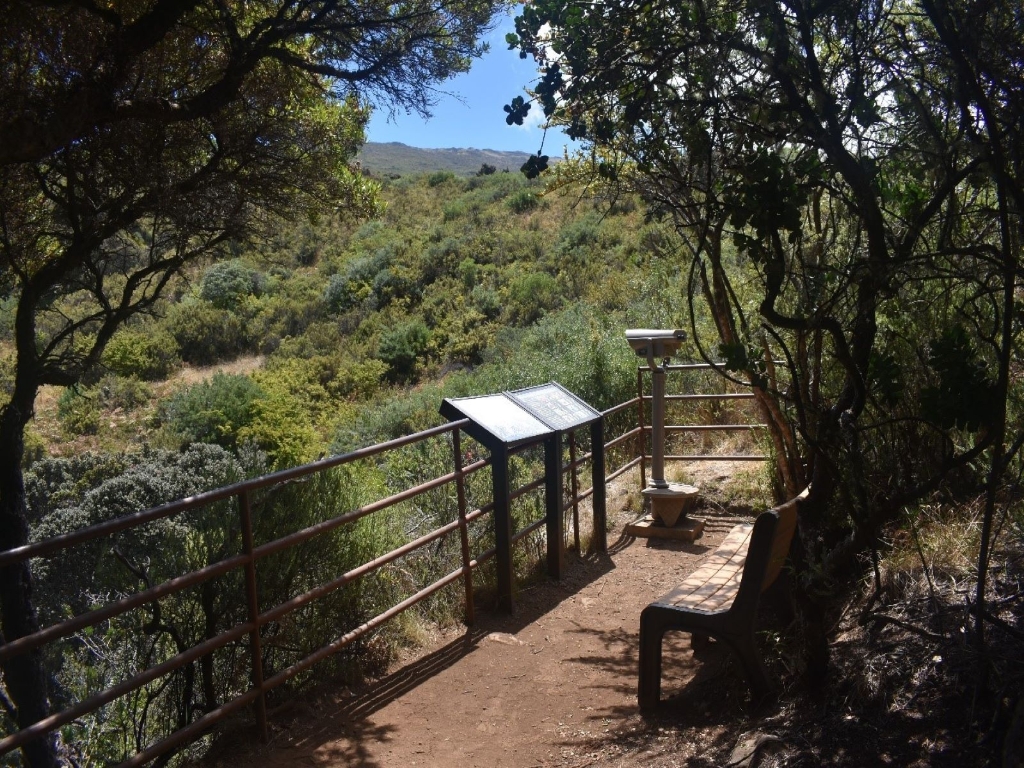
This next stop is a great place to potentially see native Hawaiian forest birds...Can you hear the birds chirping?
Most of these bird calls are from rare native honeycreepers. From one original rose finch species that arrived in Hawaiʻi 4-6 million years ago, as many as 54 forest bird species evolved, through a process called adaptive radiation. Their beaks and bodyparts adapted to their food source, some grew long curved beaks to get into bell shaped flowers, while others adapted with sharp beaks for prying into bark and cracking seeds. Watch what each bird is doing to learn about how its beak helps it to eat food.
Today these native forest birds have been pushed up higher to this elevation on the mountain due to habitat loss, climate change, and mosquitos that spread the disease avian malaria. A single bite by an infected mosquito can be fatal. Only 17 species remain, some with fewer than 500 individuals left. Without swift action, several species of honeycreepers will become extinct in the next ten years. One technique to saving our forest birds is of a naturally occuring bacteria called Wolbachia that acts as “mosquito birth control.” Male mosquitoes infected with the bacteria can mate but don’t produce offspring, causing populations to crash. To learn more about the “Birds not Mosquitos” effort visit, Saving our Forest Birds - Haleakalā National Park (U.S. National Park Service) (nps.gov)
The remaining forest bird species on Maui and most common are ʻamakihi, ‘apapane, ʻiʻiwi (scarlet honeycreeper), and ʻalauahio (Maui creeper). Very uncommon, restricted just to east Maui and rare are the ʻAkohekohe (crested honeycreeper), and critically endagered Kiwikiu (Maui parrotbill). They represent a colorful thread that runs through the evolutionary history of the Hawaiian Islands, with the strongest and most adaptable species persisting through time. Learn more about these species on our forest bird website https://www.nps.gov/hale/learn/nature/birds-of-the-summit-district.htm
For 20 seconds, close your eyes and count the different bird calls/sounds that you hear, how many did you count? Taking the time to stop, observe and listen affords you an experience you can find no where else in the world. Take a look through the binoculars and read the information wayside panel to learn about these elusive native Hawaiian honeycreeper birds. Continuing along the trail you'll discover the pilina (interconnections) also found within the native shrubland habitat.
Is there something we missed for this itinerary?
Itineraries across USA


















































